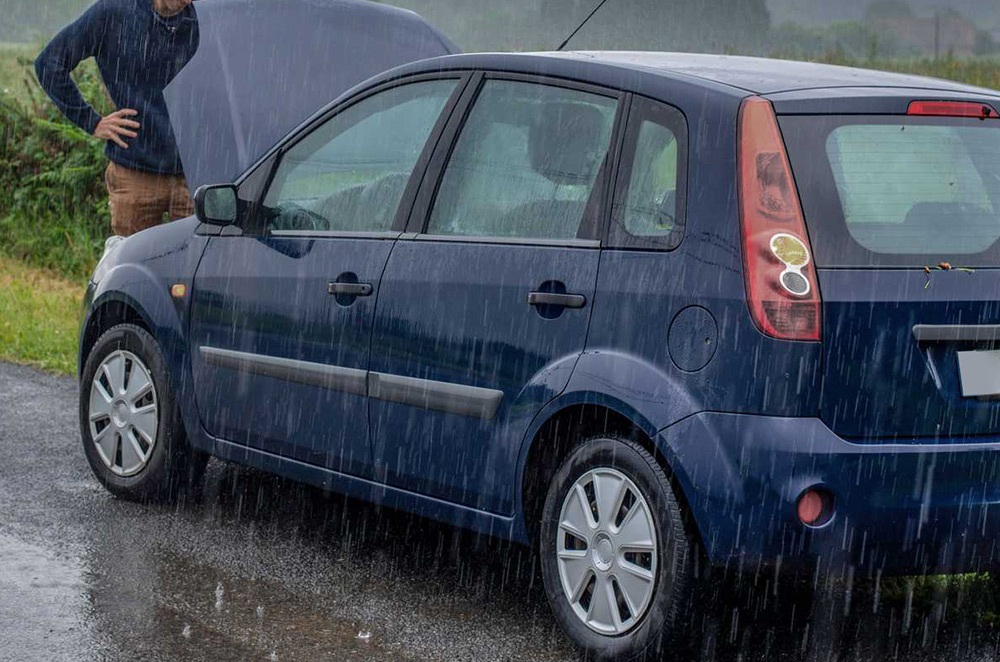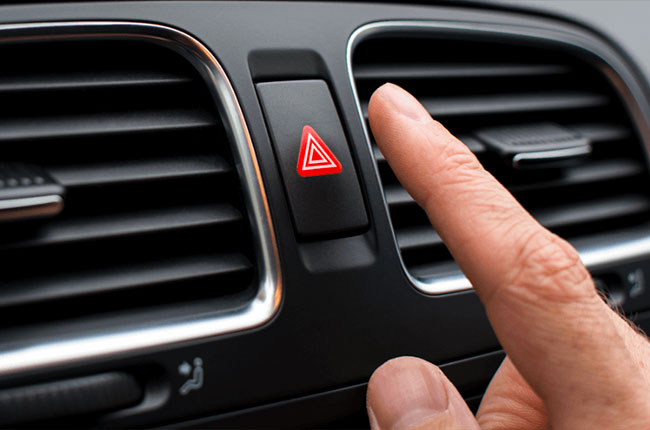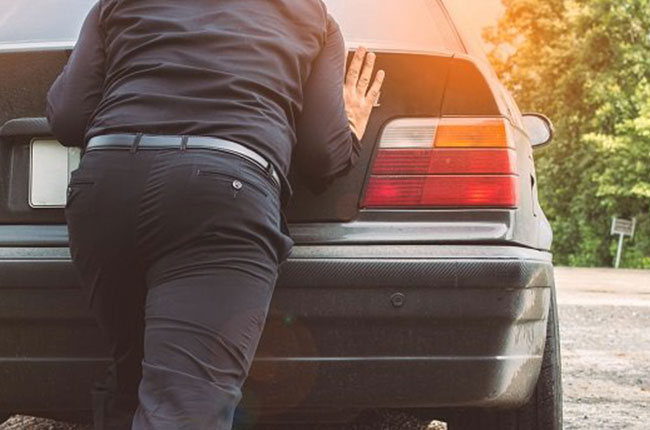
Water will harm electronics. Leave your phone out in the rain exposed enough and long enough, and you have a recipe for disaster. Most cars are able to withstand even the strongest of showers, but given enough age and enough exposure, their electrical system may eventually succumb to the pressures of good ol’ H-2-O.
So what do you do if you do encounter electrical problems while you’re out on the road due to a torrential downpour? Well, there are a few solutions depending on the situation.
In the rain
Many things can happen when the heavens open up. Water has a nasty habit of getting everywhere especially with rainfall or floods. Unfortunately, not all cars are able to or in the right condition to combat high floodwaters or even splash from the road.
Things to watch out for:
- Flood
- Excessive rain
- Splash from the road
Vulnerable parts
A flood can get to places that rain can’t like the engine bay that houses several important components. Even if your battery is relocated to other areas like the trunk where flood water may have a harder time getting in, you still have to worry about other components like your alternator, which feeds from the engine’s power to charge the battery and power the other components in the car’s electrical system. Worn weather strips may also allow rainwater to get into your car’s electric components.
- Alternator
- Battery
- Worn wire insulators
- Weather seals
It is worth noting that the alternator and the battery are positioned high up in the engine bay, and won’t necessarily be affected by water. However, a high-enough flood, an old-enough battery, or enough splash from the road may cause the system to short-circuit provided there are exposed wiring or terminals. SUVs, crossovers, and vans ride higher than most sedans and hatchbacks and thus can withstand higher flood levels, but even a poorly-maintained pickup truck or SUV can succumb to the rain without proper maintenance.
How does your vehicle stall?
Pay attention to how your engine stalls. If it stalls over time, it could be that your alternator has short-circuited or stopped working and feeding power to the system. Your car will then drain the battery and slowly lose its other electrical systems and then the engine will stop running. Your car's battery warning light may also come on, and it is a sign that your car battery might not be charging or is out of charge. If your engine is still running, but the light is on and there is no noticeable drop in power, it is likely that the battery is on its way out but the alternator is still in good condition. If, however, you do see your interior lights flickering and there is a substantial loss in power, then your alternator might not be sending power to your electrical systems.
Water may also find its way into your battery. While unlikely, a typical lead-acid cell is sealed disallowing water to creep in. However, if a battery is old enough and its seals are compromised, an excess amount of water may lead to a rather explosive failure in rare cases.
To protect itself from short-circuiting, a car will usually have a series of fuses that will “blow” if given enough current. Your vehicle may come with spares for you to use to replace the blown fuses, however, do consult the owner’s manual or phone for some professional help. Do not attempt to replace a fuse with wet hands, in the rain, or while the car is turned on and the battery is connected.
What do you do if you’re stalled?
This might be a bit tricky depending on where you’ve stalled. If you’ve stalled in the middle of the road, make sure to signal to the side of the road, or if you’re unable to move, turn on your hazard lights try and push your vehicle out of harm’s way, and follow these steps:
- Turn off your car’s ignition
- Open the hood
- Disconnect the battery
- Call a towing service or roadside assistance provided by your dealership or insurance company
If you are, however, stalled in the middle of a flood and your vehicle is immersed in water, follow these steps:
- Do not try and restart your engine.
- Exit the vehicle through either the doors or windows make sure to switch off the ignition before you leave
- Call a towing service or emergency rescue service if you cannot leave your vehicle
If you are going to attempt to repair your vehicle by the side of the road, consult the owner’s manual to get an idea of how the car is laid out.
Latest Features
-
An all-electric future: The Porsche Macan Electric / Featured Article
Porsche’s Macan goes all-electric; it’s a new beast with an electrified heart, yet unmistakably Porsche in performance and spirit.
-
Which Kia should I buy? / Featured Article
We’re here to help you decide which Kia vehicle is best for you, whether it’s a sedan, crossover, or minivan.
-
Why Lynk & Co is a good option for luxury car buyers / Featured Article
Lynk & Co offers premium value for those exploring the luxury market.
Popular Articles
-
Electric Vehicles in the Philippines for under P1 million
Jerome Tresvalles · Aug 19, 2025
-
Top 3 Cars For Every Lifestyle—What Cars Are Right For You? | Behind a Desk
Caco Tirona · Apr 24, 2024
-
5 Tips to Maximize Fuel Efficiency
Jerome Tresvalles · Sep 09, 2024
-
Five driving habits that are draining your fuel tank
Jerome Tresvalles · Jun 24, 2025
-
Can engine braking harm your engine?
Jerome Tresvalles · Sep 11, 2025
-
Do electric cars even need maintenance?
Jerome Tresvalles · Oct 23, 2024
-
Best vehicles for an active outdoor lifestyle
Shaynah Miranda · Jul 25, 2024
-
How to drive different types of vehicle transmissions
May 23, 2024
-
5 easy ways to keep your car interior clean
Allysa Mae Zulueta · Nov 15, 2021
-
How to survive Metro Manila traffic
Earl Lee · Aug 16, 2022







